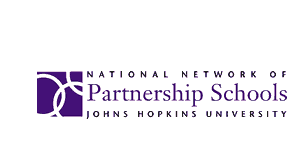District Model

NNPS guides district leaders to improve their knowledge of school, family, and community partnerships, improve district-level policies and plans for partnerships, and guide schools’ Action Teams for Partnerships in developing excellent programs of family and community involvement.
District leaders for partnerships are needed to help all elementary, middle, and high schools establish teams, write plans, share best practices, and evaluate their programs of school, family, and community partnerships. Without a district leader responsible for family and community involvement, only some schools will strengthen and sustain their partnership programs and practices. With strong leadership, every school will welcome, inform, and engage parents in their children’s education.
NNPS supports district leaders for partnerships by providing professional development and on-going technical assistance to help them organize their work, improve policies, and increase the quality of partnership programs at the district level and in all schools. NNPS approaches enable districts and their schools to meet the requirements for family involvement in ESSA, Section 1010.
This section of the website provides tools, guidelines, and information on how districts in NNPS are working to develop district-level leadership, clearer policies for partnerships, and direct assistance to schools.
- Lead and Succeed. This inventory of district leadership activities should improve the scope of partnership programs at the district level and improve district leaders’ direct assistance to schools.
- District Leadership Action Plan for Partnerships. A template for district leaders to write their annual plans for district-level activities and for facilitating schools’ Action Teams for Partnerships is in the NNPS Handbook and in .pdf form on the CD in the TFourth Edition.
- Program Evaluation. Annual UPDATE surveys from NNPS collect data that will help your district evaluate the quality and progress of partnership programs in the district and in your schools. Also see the “built in” evaluation tools that you can use to help your schools’ Action Teams for Partnerships monitor progress.
- 2021 Promising Practicing Partnerships.
- Materials that district leaders may use to make presentations and conduct workshops on partnerships in the section Publications and Products
- Ideas from NNPS districts in the annual collections of Promising Partnership Practices in the section Success Stories on this website.
- Summaries of programs of NNPS Partnership District Award winners in the section Success Stories.
- Opportunities for professional development from NNPS at the spring and fall District Leadership Institutes, and other workshops in the section Professional Development.
- Other benefits and services from NNPS for members.
For more information and planning tools, district leaders will find clear and useful guidelines in Chapter 7 of the NNPS Handbook: Epstein, et al. (2019). School, family, and community partnerships: Your handbook for action, fourth edition. Thousand Oaks, CA: Corwin Press. The chapter includes background information on district leadership, district leaders’ roles, sources of funding for partnership programs, a leadership checklist, sample plans, and a guide to “What Do Facilitators Do?”
Each district that joins NNPS must identify a district leader for partnerships who becomes the Key Contact to NNPS. On the website, see the section Join NNPS for more information.
Copyright © 2023 - PartnershipSchools.org at the Johns Hopkins University School of Education - All rights reserved. Conforms to W3C Standard XHTML & CSS

